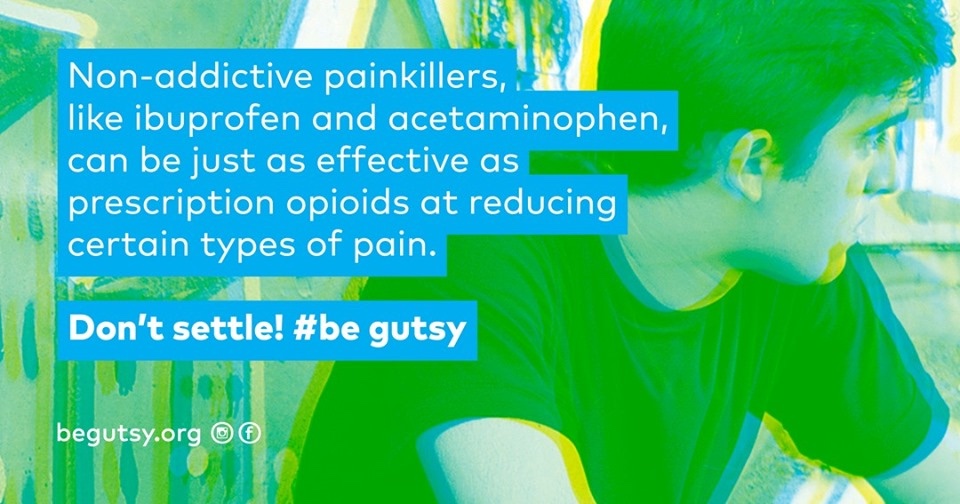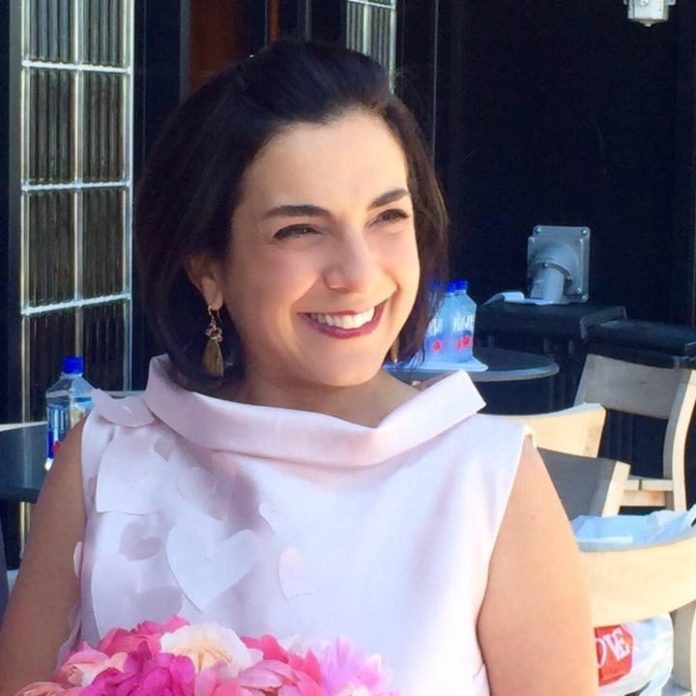Opioids, more specifically, prescription opioids has become one of America’s most dangerous epidemics. Even though white Americans are the ones that are usually associated with the abuse of opioids, now hispanics are also partaking in this tragic situation. Sadly, this is an issue that is affecting latinx youth as well. Just last year, 7.3% of young adults (18 to 25 years old) reported misusing opioids. This is something that can quickly develop into a catastrophe, which is why Marta Michelle Colon is doing something about it with a program she created called Be Gutsy.
Martha Michelle Colon, a clinical psychologist, launched Be Gutsy in July 2018. This national program, which functions in both English and Spanish, was designed to educate the latinx youth about the perils of opioid use. The name of Be Gutsy is directly translated by the spanish phrase that states ‘ten agallas.” Mrs. Colon told me that she noticed that many young adults were telling her that they needed to be brave or ‘be gutsy’ most of the time to ask people about their opioid use, so she adapted that phrase to her initiative. It’s understandable they feel this way because it’s a tough subject to touch upon.
Be Gutsy focuses on teaching its content by guiding the growing social skills of teens and young adults and directing them into the importance of a healthy lifestyle. This program is able to promote their information through worksheets, workshops, the arts, and long-term support. Having all these different methods in the program help direct the participants towards the same goal — understanding the dangers of opioids.
The fact that Be Gutsy uses art to stimulate the learning experience of its participants fascinated me. By doing this, the students are encouraged to paint murals, write and perform theater acts about the positivity in a healthy lifestyle in schools and universities nationwide, which can help them understand the program better.
“Art is self-empowering and it’s a way for young people to express their capabilities,” Mrs. Colon told BELatina about including art in Be Gutsy.
Though there have been other programs that tackle the dangers of improper opioid use, Be Gutsy is the first of its kind. Be Gutsy is the first national program that focuses on educating the youth with an emphasis on the latinx community.
Considering the fact that we are living in a technology-driven world, a lot of the information can be found online. There are worksheets you can download on the Be Gusty website, in both English and Spanish, that can help educators, families, or even friends, help someone avoid the tragedy opioids can bring. Their social media accounts is also used to spread awareness on the negative impact of opioids. This way latinx youth can continuously be informed on the dangers of opioids as they scroll through their own accounts without interrupting their everyday lives.

However, it was due to a daunting reality that led to the conception of Be Gutsy by Marta Michelle Colon.
Mrs. Colon had the misfortune of experiencing her brother become dependent on prescription opioids. During the mid-2000s, when both her and her brother were living in Puerto Rico, her brother got into a motorcycle accident. In order to try to lessen the pain of his injuries, the doctors prescribed her brother some opioids. Even though her brother was given specific instructions on when to take his dosages, at some point he ignored those specifications, hence leading him to misuse his prescribed opioids. Unfortunately, this caused her brother to lose his life.
After she had watched her brother lose his life to opioid addiction, Mrs. Colon decided to take action. One of her bigger drivers to begin her quest to create an educational program about opioids was her frustration. There were many times where she had she tried to research the effects of pain relievers, but constantly found herself hitting deadends instead. There seemed to not have been enough information in regards to this subject and that worried her. To her bewilderment, she realized that there was just not enough information about the misuse of opioids for the latinx community.
I don’t know if you’ve noticed before, but hispanic households don’t usually touch the topic of opioids. In my case, I was just told that this was a drug meant for people in the wrong footsteps and who don’t pay attention to their parents. Even though I see some effort, this information might have not been enough for other someone who needed more reinforcement on the topic.
I know some people may think that these types of situations would not occur to them or anyone near them, but there really are no guarantees when it comes to drugs, including opioids. I can say this because when I was in high school (about a decade ago), I was offered a variety of opioids. And no. I wasn’t actively going after them.
I had someone close to me at the time who had gotten in a car accident that wanted to give me some Percocet to try, but I refused. There was another instance where I was offered Vicodin. But the worst one was when I was actually offered heroin. I don’t know why they got the courage to ask me, but it all happened after this person started complimenting my veins. Who does that? In order to try to persuade me, they told me that I’d be getting the best treatment like having my own syringe and needle (I guess this is only for the “elites” of this world). Needless to say, I freaked out. I obviously declined the offer, but I was still really worried. Despite the fact that I was very young then, I knew this was dangerous. In that moment, I tried to dissuade this person from engaging in that behavior as well, although I don’t think I was successful, which saddens me a lot. At least I know I tried my best to the best of my abilities in that time, but I didn’t have many resources to rely on back then. See, I went to a private Catholic school, so even if I would’ve said something about it, I’m sure they would’ve just tried to use a punitive method to rectify the situation. How does that help anyone?
The truth is that since my scary encounter, the prevalence of opioid misuse, especially in teens, has been on a steady climb in the last few years. Mrs. Colon says that teens have been known to take prescription from their family household’s medicine cabinet.
“In this case, sharing is not caring. Never share prescription medicine,” Mrs. Colon warns people about the medicines that are within many people’s reach.
But can we blame people for checking something out that’s within reach? Here’s the thing. Prescription opioids are not illegal, so they are going to continue being given out. At least for now.
I’m not sure how this makes you feel, but this is unsettling to me. This much accessibility often brings disastrous outcomes, which is why we need to get the youth on track with Mrs. Colon’s views.
For instance, a young person may not be aware that they may be on the route towards addiction because they might not even understand the labeling of the medicine bottle. This proves to be true many times in the cases of latinx youth since there may be the possibility of them struggling with a language barrier.
In addition to the language barrier, many latinx youth may not even comprehend how simple it is to overdose. “It’s important to talk about this issue as one pill is enough for an overdose,” says Marta Michelle Colon. This fact heightens when a prescription opioid is mixed with alcohol.
Another danger the latinx youth face with opioids is their lack of understanding on how addiction.
Mrs. Colon states that “even if they don’t overdose on their first time, they can become addicted to opioids within their fifth dosage.” Imagine that, just on their fifth time. Sadly, some teens and young adults feel that they can control the ingestion of these drugs. Please don’t ever think this way with any drug. Most of the time, drugs will have more leverage over you than vice versa.
As you can tell, the risk increases with each piece of information that is learned about this opioid epidemic. According to Be Gutsy, four-out-five new heroin users started by misusing painkillers. Prescription opioids are no joke at all.
So, how can you use Be Gutsy? Well, for starters, you can sign up yourself. Schools and universities are also encouraged to use be Gutsy’s resources to raise awareness on this issue. But for the most part, you can find Be Gutsy organizing fairs and conferences at various schools to promote the many advantages Be Gutsy has to offer and how accessible they are.
Since BELatina felt strongly about this topic, we went ahead and personally asked some questions to Marta Michelle Colon about the risks of opioid misuse.
Below are answers to tailored questions specifically for our readers. Who knows, this type of information may possibly save a life in the future. Remember, one of the best ways to help is to be empowered by the right information.
Why do you think there’s not much talk about opioids within the hispanic community?
One of the biggest problems is that a lot of people still believe it’s a rural problem. But really, it’s now spread to urban towns and cities. It wasn’t a problem we were seeing in the latinx until a couple of years ago, so it’s fairly new to everyone. Also, prescription opioid is not considered a drug. So, really it’s not seen as an illegal drug, especially by the hispanic community. That’s why we want to make sure we create this awareness. By bringing awareness to the hispanic community, people will understand the importance of asking their doctors of the possible consequences any particular opioid can have. Being educated on this matter will motivate people to pay close mind to taking the correct dosages of their medication. This way they can avoid opioid dependence and teach others about the issues concerning opioids.
I also think many people in the hispanic community won’t say anything because there’s still a lot of stigma. But we need to break that mentality down. This is why I believe in community-based organizations. That way we are more integrated. Once we reach that break through, then we will start seeing people working together to learn about the disastrous effects of opioid dependence.
What can people do if they’ve realized their friends are dangerously dependent on opioids?
It’s always going to be on the person dependent on opioids, but the best thing you can do is have a conversation with your friend. I do want to stress that it doesn’t necessarily have to be Be Gutsy who helps someone going through this. This is why Be Gutsy has many resources available for people to use. Anyone can take the initiative to start this conversation. Just make sure to bring in data to show your friend. That way you can have a couple of talking points. You can encourage your friend to see the counselor at their university, if that applies to them. You can also bring this to the attention of any school counselor to help your friend and ask to stay anonymous. Another thing you can do is speak to their parents. You’re doing this to save someone, so feel no shame in helping.
Remember, there are many layers that need to be uncovered to make sure this person gets the help they need. But that simple conversation with your friend or anyone near them can make a huge difference.
This one is hard, but maybe someone out there reading our magazine can benefit from this, what can people do if they’re already battling with an opioid addiction?
Have an open conversation with someone you trust. Be brave enough to understand that you need the help. Get treatment. Channel in your ability of self-awareness. But really, that bravery is key to recovery. Try to ignore all the stigma around this issue. Taking that leap due to your bravery is a great start. It means that you want to take control of your life. Go seek help. Treatment is a good thing. Your bravery will only lead to positive things.
Any words you want to leave to our readers?
Know this and own this information to make sure you save lives. You never know when you might have to use it to save a friend or a family member. Also, use us. Use our materials and our tools. The more we spread the word, the more we can help each other and save lives. If we save one life a day, we are saving 365 per year. So, imagine our capabilities.
For Image credit or remove please email for immediate removal - info@belatina.com








































